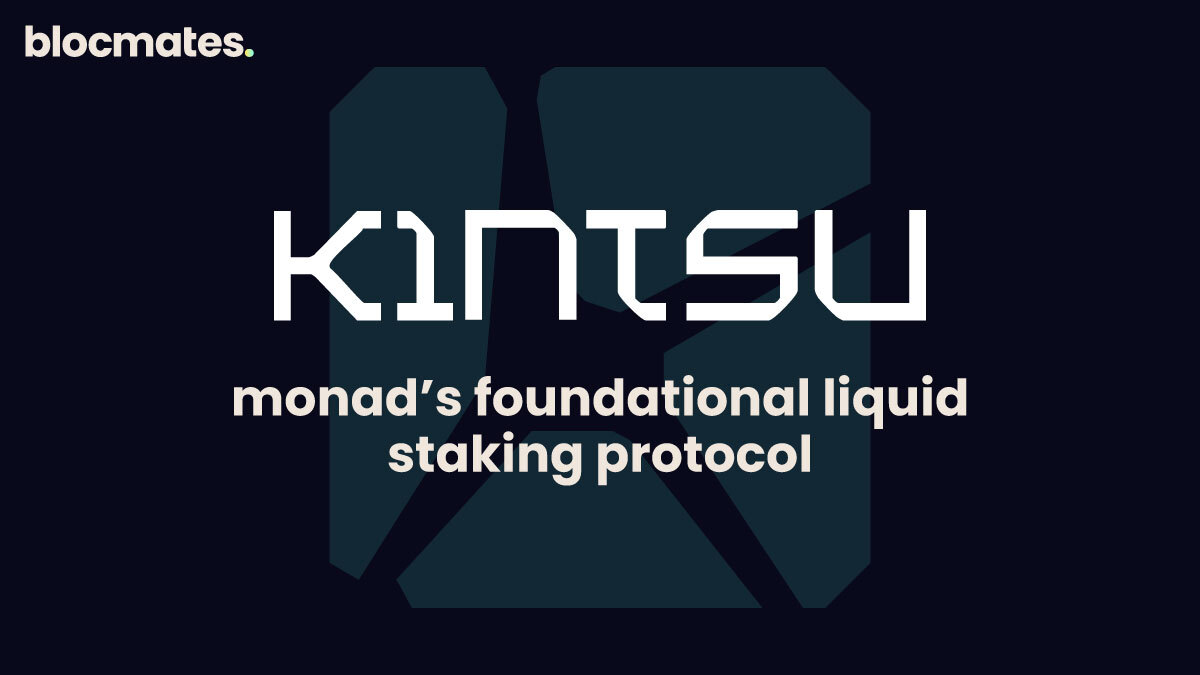Pendle is an EVM-based project that draws inspiration from an investment vehicle found in traditional finance: the Interest Rate Derivative.
This instrument is widely used by institutional investors, banks, companies, and individuals to hedge against market interest rate fluctuations.
However, PENDLE's versatility extends beyond hedging, allowing users to adjust their risk profiles or even speculate on interest rate movements.
Core idea
Pendle's core innovation is Yield Tokenization. This process involves dividing yield-bearing assets, such as stETH (Lido staked ETH), into two different tokens—principal and yield—offering users with different risk appetites the opportunity to earn or lock in yield.
Before we delve into the workings of Pendle, let’s explore the fundamental difference between the Principal token and the Yield token with a real-world example.
Yield-bearing assets such as real estate consist of two parts: the asset itself (Principal) and the underlying yield that comes from cash flow generated through renting (Yield).
By dividing an asset into two parts, investors can capitalize on different future scenarios based on their analysis.
Yield Token (YT):
For instance, with a yield token, investors can obtain the right to earn yield generated through renting without purchasing the entire property.
This strategy can lead to higher returns, albeit with associated risks due to fluctuating rental yields.
Principal Token (PT):
Conversely, acquiring the rights to own the property (Principal Token) offers a more stable price appreciation due to the property value increasing over time.
Underlying (= YT + PT):
The sum of both of these tokens (the principal + the yield) has to be equal to the investment's total underlying value. But, by splitting the yield-bearing investment into its constituent parts, investors with different goals can hedge or speculate on how these parts interplay. Let’s look at how this works in practice.

For a crypto-specific example, check this out:

How Pendle works
Now that we’ve established Pendle's core idea, let's explore how this mechanism works in DeFi.
In the land of crypto, users receive yield-bearing assets when they deposit funds into a yield source.
For example, DAI staked in Compound is represented as cDAI in your wallet, and ETH staked in Lido is represented as stETH. cDAI and stETH are examples of yield-bearing assets.
Instead of splitting real estate into PT and YT tokens, Pendle does it with cryptocurrencies with underlying yield properties.
After users have deposited these tokens into Pendle, the protocol automatically splits them into PT and YT tokens using a clever wrapping mechanism.

In Pendle, all positions have a specified maturity date. If users hold a token until its maturity:
- YT holders receive the yield until maturity, after which, the YT token value trends to zero.
- PT holders receive no yield, but at maturity, the value of the PT equals the value of the underlying asset. Think of this like a bond.
However, the tokens can be freely claimed even before they’ve reached maturity, allowing users to speculate on the rise and fall of these interest rates.
This is great for multiple types of investors:
- Alice really loves ETH and just wants more of it. She sees she can lock in a 15% discount on ETH by buying a eETH principal token and holding it for six months. Great!
- Bob thinks the yield on USDe should increase with increased retail interest in crypto, so he buys a bunch of USDe yield tokens. He gets leveraged exposure to the change in its yield.
- Charlie is a crypto native that thinks that the market is way too hyped for the EIGEN airdrop and is pricing swETH yield tokens (YT-swETH) too high in response. He buys swETH principal tokens (PT-swETH) because he thinks the yield tokens will decrease in price (remember that Underlying = PT + YT, so a high YT-swETH price means that PT-swETH prices are low since they have to add up to the fixed swETH price).
- There are also some advanced strategies, using looping and/or liquidity positions!

Combining PT/YT tokens, a custom AMM design, and a governance mechanism enables users to experiment with different yield strategies within a single protocol.
Pendle put together this handy video, in case you are a visual learner:
User Interface
Pendle UI consists of 2 sections segregating the different yield-earning vehicles based on complexity.
The ‘’Earn’’ section provides a simplified and streamlined user experience dedicated to beginners or users who simply wish to earn a stable yield on their assets without any hassle. It includes the following ways how to earn yield:
- Fixed-yield deposits guarantee earning you the displayed amount of your chosen asset if you hold the position until maturity. Behind the scenes, the protocol swaps your deposit for your chosen asset's Principal Token (PT).
- Liquidity provision utilizes Pendle’s unique AMM design, which derives yield from fees, LP rewards, incentives, etc., and incurs zero Impermanent loss if the position is held until maturity.

The ‘’Trade’’ section is meant for the more DeFi-savvy degen. This protocol section lets users directly buy and sell Yield and Principal tokens and execute more sophisticated yield trading strategies.
This section includes:
- Trading of different tokens and their PT/YT positions;
- Liquidity Provision
- Points market with external rewards given from other protocols
- PENDLE staking and governance

Tokenomics
$PENDLE, the protocol’s native ERC-20 token, is predominantly used for governance and draws inspiration from Curve’s Vote-escrowed model.
By locking up $PENDLE tokens, users receive vePENDLE in return, which grants them an array of benefits, most notably voting rights.
By exercising these rights, holders of vePENDLE can vote to channel $PENDLE incentives into a specific pool, boost LP rewards, and receive voter’s APY(80% of the swap fees of the voted pool).

Ecosystem
Pendle is deployed across several EVM-compatible chains, making it easily accessible to a broad user base.
The project has also integrated some of the most popular tokens from other protocols, such as Ethena’s sUSD, Lido’s stETH, and Ether.fi’s eETH.
In addition, to increase yield or capital efficiency, the Pendle-derived PT and YT tokens can also be traded on other third-party DeFi protocols.

Team and Investors
Pendle Finance, headquartered in South Korea, was founded by anonymous individuals known as TN Lee, GT, YK, and Vu.
The company has raised over 17 million dollars over several funding rounds from prominent venture firms, such as Binance Labs, The Spartan Group, and Hashkey Capital.
Pendle has also received a 2 million dollar grant from the Arbitrum Foundation to conduct campaigns to boost trading volume and encourage users to explore ecosystem integrations.
Final thoughts
By drawing inspiration from traditional finance, Pendle Finance enables users to customize their yield generation and risk management strategies, offering flexibility and the potential to improve capital efficiency.
With a user-friendly interface, diverse earning options, governance benefits through the $PENDLE token, and integration across multiple EVM-compatible chains, Pendle has undoubtedly established itself as a blue-chip DeFi protocol.





.webp)
.webp)

.webp)










.webp)

.webp)
.webp)

%20(1).webp)



























































%202.webp)


.webp)

.webp)
.webp)
.webp)



.webp)












%20the%20Next%20Big%20Unlock%20in%20AI.webp)



.webp)
.webp)


.webp)
.webp)










.webp)


.webp)








.webp)







.webp)




.webp)


























.webp)







.webp)















.webp)

.webp)
.webp)

.webp)














.webp)

.webp)


.webp)








.webp)




